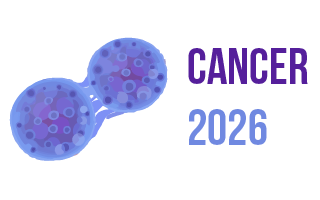4th International Conference on
Innovations and Advances in Cancer Research and Treatment
October 08-09, 2026 | Tokyo, Japan

Cancer 2026

Florida Gulf Coast University, USA
Abstract:
Conventional chemotherapeutics present problems from poor pharmacokinetic profile to toxicity to healthy tissues, which may hamper their clinical application. Nanoencapsulation using lipid-based and polymeric materials has shown great promise in circumventing this, because of their amenability to conjugation with targeting moieties like antibodies, ease of degradation under specific conditions, and drug-cargo-carrying capacity. Compartmentalization and solubilization of hydrophilic and hydrophobic substances by liposomes make them a versatile and ideal drug delivery system in nano-pharmaceutical applications. We incorporated the putative anticancer drug candidate, kaempferol in liposomes (Lip-K), and investigated its cytotoxic and apoptotic potential against human glioblastoma cells (LN-229) and healthy human astrocytes (HA), vis-à-vis the non-encapsulated kaempferol (NK). HPLC analysis confirmed a 56% encapsulation efficiency and a concentration of 55.62 μg/mL for the liposomal suspension, with a zeta potential –15.32 ± 0.83 mV and an average particle size of 200.44 ± 12.22 nm (PDI = 0.29 ± 0.06), determined by dynamic light scattering. The relative cell viability and cellular metabolic activity was measured by sulphorhodamine B and MTT assays, respectively. The analyzed results showed that Lip-K demonstrated significantly (p<0.05) higher anti-proliferative (lower IC50) activities against glioblastoma cells than free kaempferol, as well as an apoptosis-inducing positive control, puromycin, in a dose- and time-dependent manner, while having minimal effect on healthy glial cells. Cytomorphological and biochemical evaluations confirmed apoptotic indices like cell surface blebbing, shrinking, and DNA fragmentation, as verified by gel electrophoresis and TUNEL assay. Co-incubation of the LN-229 cells with the radical scavengers, NAC and BPN, showed that ROI-mediated apoptosis was unabated. Overall, our results suggest that liposome-encapsulated kaempferol offers an effective and relatively safe cancer treatment, with the promise of overcoming antioxidant-induced drug resistance. Unlike most cancer therapeutics, the ability of liposomes to cross the blood-brain barrier sheds light on the potential use of liposomal kaempferol to treat glioblastoma.
Biography:
Dr. Chukwumaobim Nwokwu completed his studies in Molecular Science and Nanotechnology. He is a widely published author, with a broad interdisciplinary focus in the fields of applied genomics, cancer therapeutics, advances in exosome and extracellular RNA (exRNA) technology, neuroscience, redox biology, toxicology, nanomedicine, biomedical engineering and device design. He is an Assistant Professor and currently serves on the Graduate Affairs committee at Florida Gulf Coast University.
